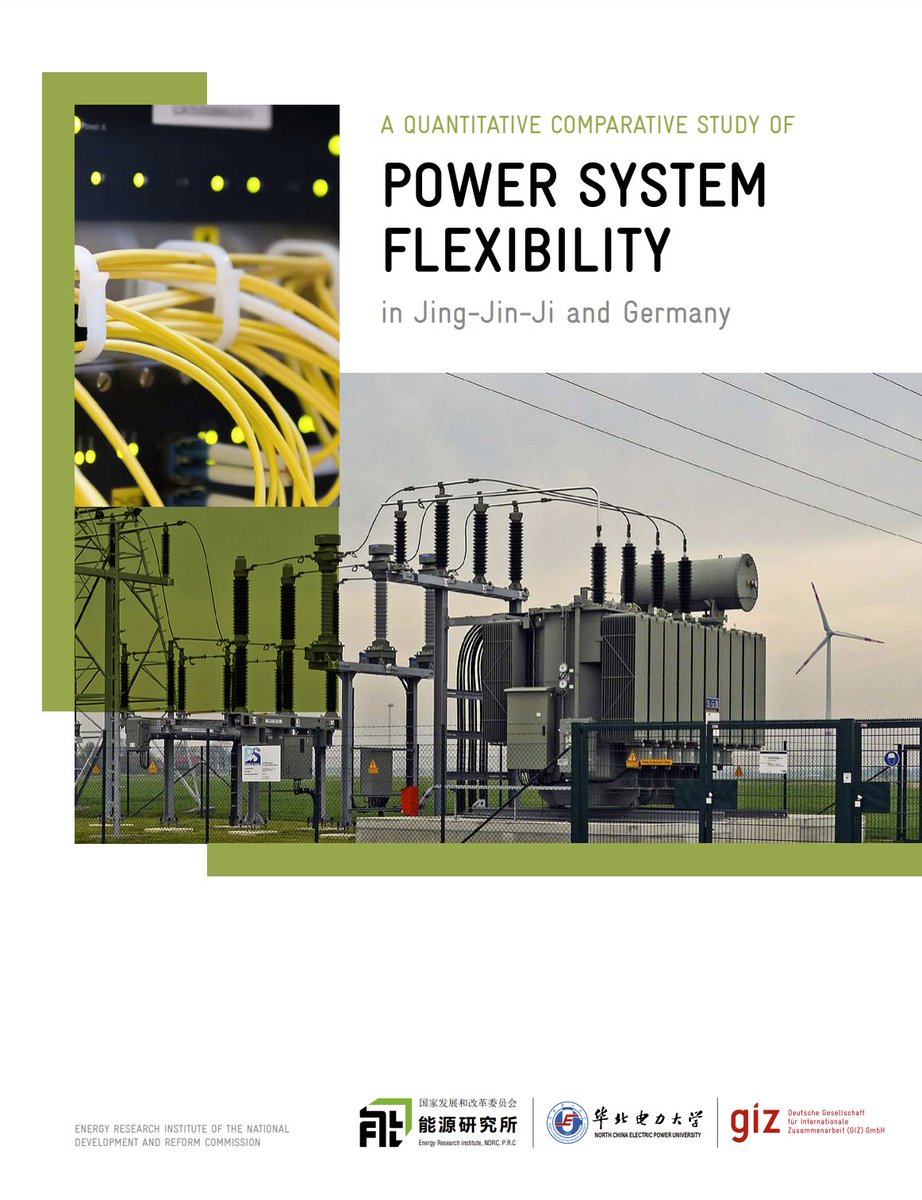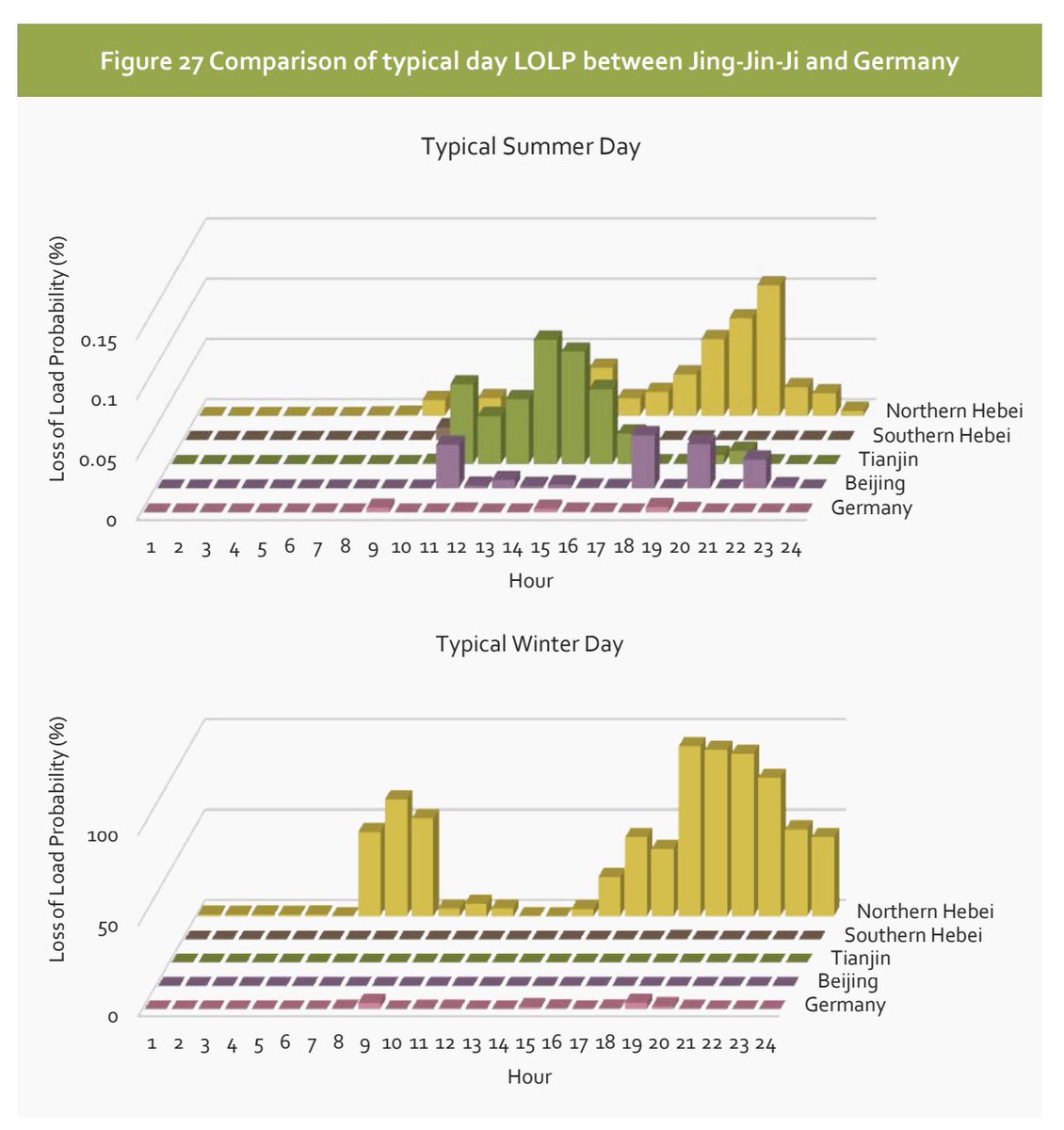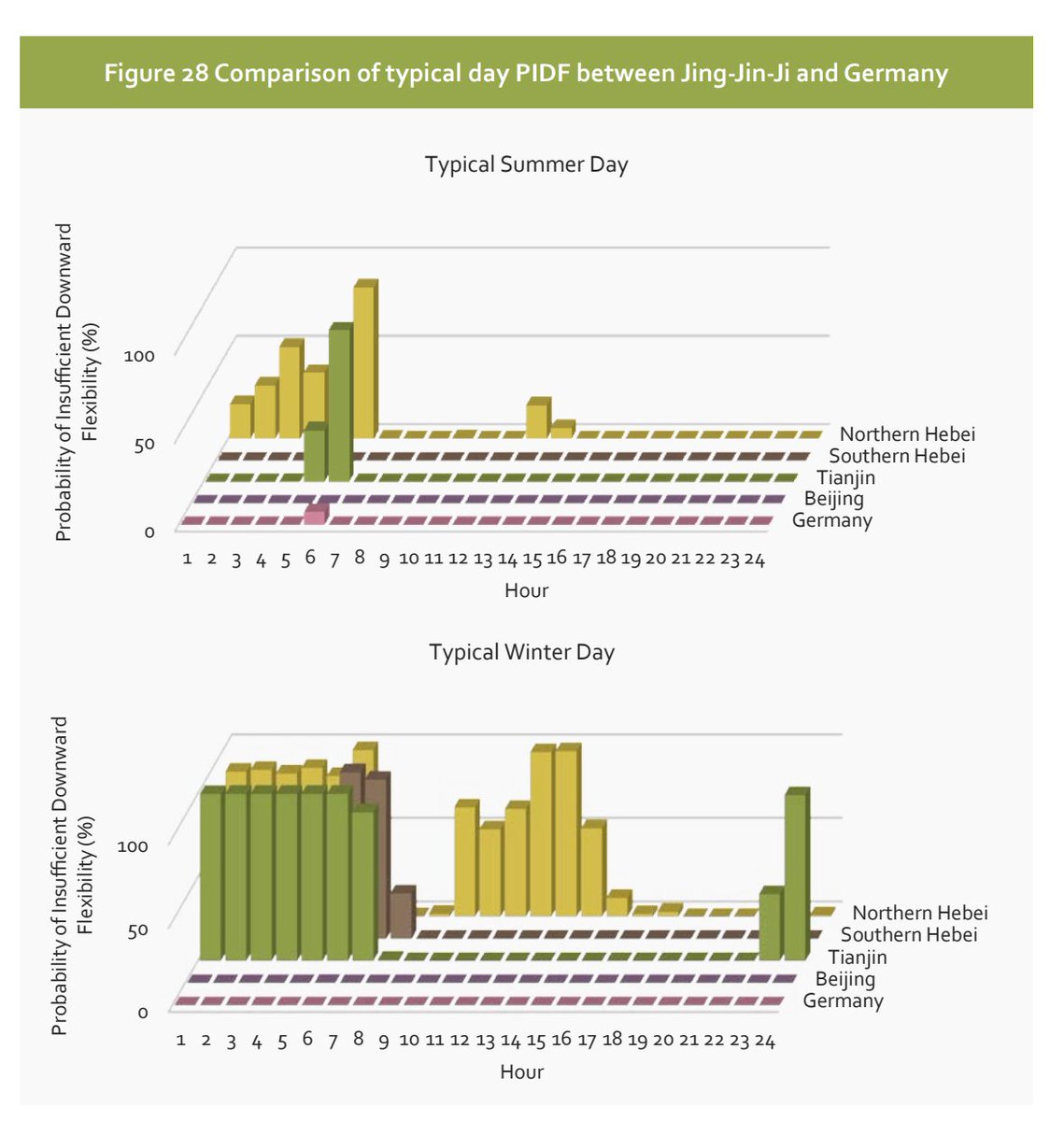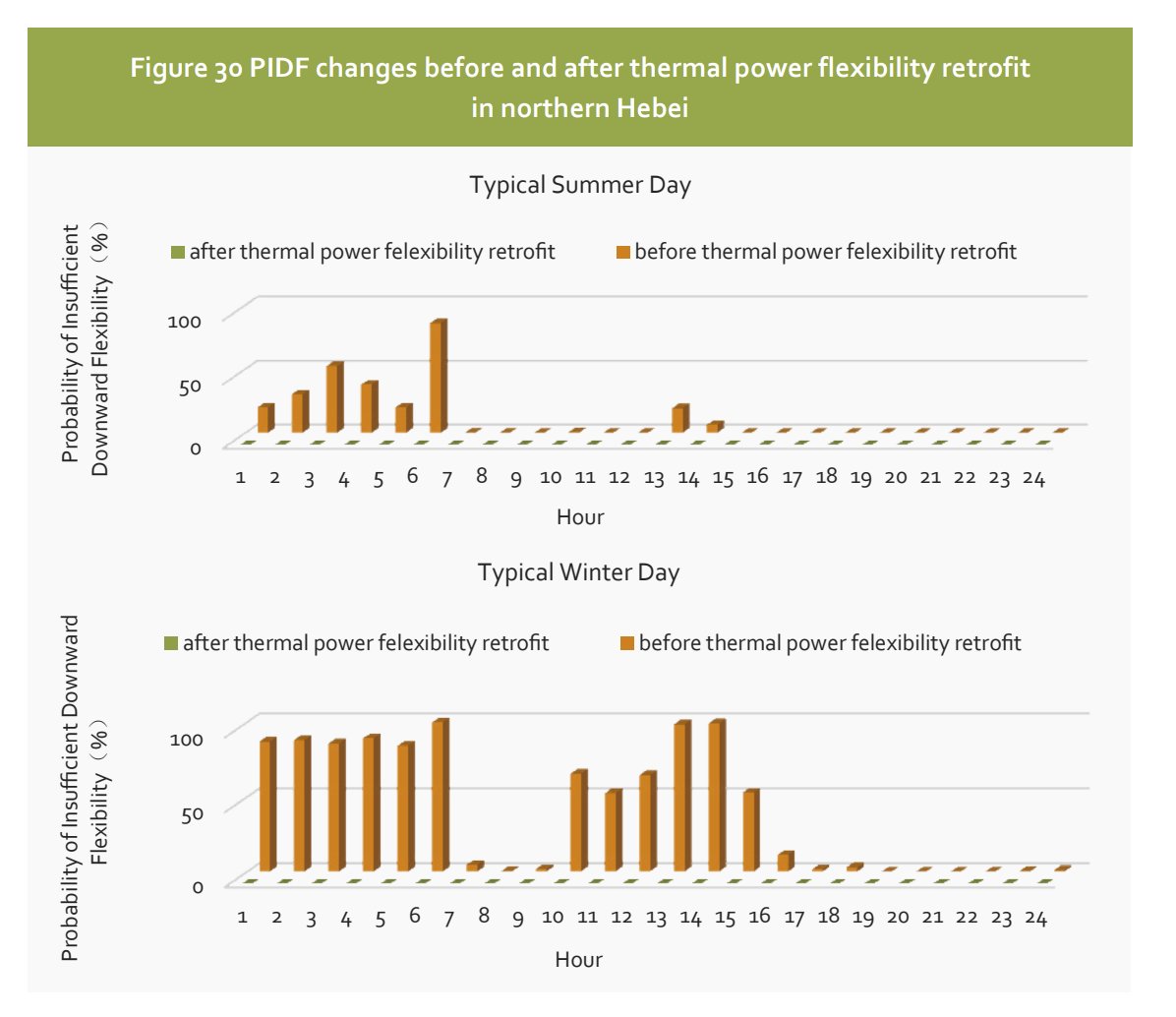You may have heard that China has a lot of wind and solar curtailment, and though it has improved, the system is less flexible than it needs to be. My project has been working on quantifying that. thread
thread
 thread
thread
After a lot of work, and a tough translation job, we finally published this report that quantifies the flexibility of the power system in Jing-Jin-Ji (area around Beijing) and compares it quantitatively with Germany, which has way more % wind and solar.
The report looked at 4 main solutions, and found that coal plant flexibility retrofits had the biggest total potential benefit and the best cost/benefit ratio. Improving interconnection flexibility was pretty beneficial too.
That's important because the region has missed its targets for flexibility upgrades at existing coal plants despite including the targets in the five-year plans. (So, if those targets had been met, this analysis would be *almost* moot...)
here's a look at the 5 flex indicators: key ones at left are Loss-of-load-probability (LOLP, probability of insufficient upward flexibility (PIUF), probability of insufficient downward flexibility (PIDF). JJJ has huge coal overcapacity, so LOLP tiny.
Insufficient downward flexibility means the system as a whole, and the conventional generators, can't ramp down fast enough, and stay on, instead curtailing renewables or just wasting energy.
There's a lot of that insufficient downward flexibility in winter and summer (and probably all seasons), and that spells curtailment of RE.
And even though loss-of-load probability is small, it's still way worse in JJJ than Germany, which doesn't have overcapacity.
Same for downward flexibility. Germany's power system is just so much less likely to experience this type of insufficient downward flexibility, even with way more wind and solar. Because: more flexible plants, and more connections.
When you hear, "of course Germany can absorb renewables, because it's well connected and right at the center of Europe," that's sort of an indictment of places like Jing-Jin-Ji in China, that are surrounded by over-capacity provinces that could send in power whenever needed...
Yes, overcapacity neighbors means they don't want Hebei's wind, but they could offer flexible backup to reduce PIDF. But as report notes, interconnectors in China are used as "emergency backup" and for peak power only. Not balancing.
Here's the effect of thermal retrofits... basically eliminates flexibility problems in Hebei... may not be glamorous, but it works. Interconnectors also helps a lot, but not quite as dramatic.
Hoping to extend this research to consider power system as it will exist in 2025, with higher RE, more storage, and the potential to pair a lot of RE with storage. Also want to add ELCC for solution set.
Big thank you to our partners North China Electric Power University and Energy Research Institute of NDRC. Authors are Zheng Yanan, Wang Xinnan, Anders Hove, Li Gengyin, and Guo Zheyu.
GIZ implements this project (the Sino-German Energy Transition project) on behalf of BMWi, and together with several German and Chinese partners. The main Chinese partner at the time we did this analysis (2019) was the China Natl RE Centre (CNREC).

 Read on Twitter
Read on Twitter








